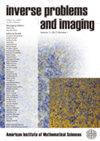雷达干涉测量的数学透视
IF 1.5
4区 数学
Q2 MATHEMATICS, APPLIED
引用次数: 4
摘要
雷达干涉测量是一种先进的遥感技术,它利用在略微不同的成像条件和/或不同时间拍摄的同一目标的两个或多个雷达图像的复杂相位。它的目标是获得关于目标的附加信息,比如海拔高度。虽然这类任务需要厘米级的精度,但雷达信号与目标的相互作用,以及天线位置精度的缺乏和其他干扰,会在图像相位中产生比感兴趣的影响大几个数量级的模糊。然而,在文献中对雷达干涉测量法的共同阐述往往会跳过这些主题。这可能导致对成像几何参数确定的精度要求不现实,图像共配准精度无法实现等问题。为了解决这些不足,在当前的工作中,我们分析了干涉高度重建的问题,并提供了一个仔细和详细的假设和要求的成像几何和数据处理需要成功地从雷达数据中提取高度信息。我们采用了两种最流行的雷达目标散射模型:孤立点散射体和delta相关扩展散射体,并强调了它们之间的异同。本文章由计算机程序翻译,如有差异,请以英文原文为准。
A mathematical perspective on radar interferometry
Radar interferometry is an advanced remote sensing technology that utilizes complex phases of two or more radar images of the same target taken at slightly different imaging conditions and/or different times. Its goal is to derive additional information about the target, such as elevation. While this kind of task requires centimeter-level accuracy, the interaction of radar signals with the target, as well as the lack of precision in antenna position and other disturbances, generate ambiguities in the image phase that are orders of magnitude larger than the effect of interest.Yet the common exposition of radar interferometry in the literature often skips such topics. This may lead to unrealistic requirements for the accuracy of determining the parameters of imaging geometry, unachievable precision of image co-registration, etc. To address these deficiencies, in the current work we analyze the problem of interferometric height reconstruction and provide a careful and detailed account of all the assumptions and requirements to the imaging geometry and data processing needed for a successful extraction of height information from the radar data. We employ two most popular scattering models for radar targets: an isolated point scatterer and delta-correlated extended scatterer, and highlight the similarities and differences between them.
求助全文
通过发布文献求助,成功后即可免费获取论文全文。
去求助
来源期刊

Inverse Problems and Imaging
数学-物理:数学物理
CiteScore
2.50
自引率
0.00%
发文量
55
审稿时长
>12 weeks
期刊介绍:
Inverse Problems and Imaging publishes research articles of the highest quality that employ innovative mathematical and modeling techniques to study inverse and imaging problems arising in engineering and other sciences. Every published paper has a strong mathematical orientation employing methods from such areas as control theory, discrete mathematics, differential geometry, harmonic analysis, functional analysis, integral geometry, mathematical physics, numerical analysis, optimization, partial differential equations, and stochastic and statistical methods. The field of applications includes medical and other imaging, nondestructive testing, geophysical prospection and remote sensing as well as image analysis and image processing.
This journal is committed to recording important new results in its field and will maintain the highest standards of innovation and quality. To be published in this journal, a paper must be correct, novel, nontrivial and of interest to a substantial number of researchers and readers.
 求助内容:
求助内容: 应助结果提醒方式:
应助结果提醒方式:


